Kirkham Priory – a hidden gem in Yorkshire
One of North Yorkshire’s little hidden gems the Augustinian Kirkham Priory is located between the city of York and the town of Malton. The stunning ruins are set in the magnificent Derwent valley on the edge of the Howardian Hills Area of Outstanding Natural Beauty. A short journey of around 25 minutes from Helmsley and Helmsley Castle you can find it on your way to the Malton Market.
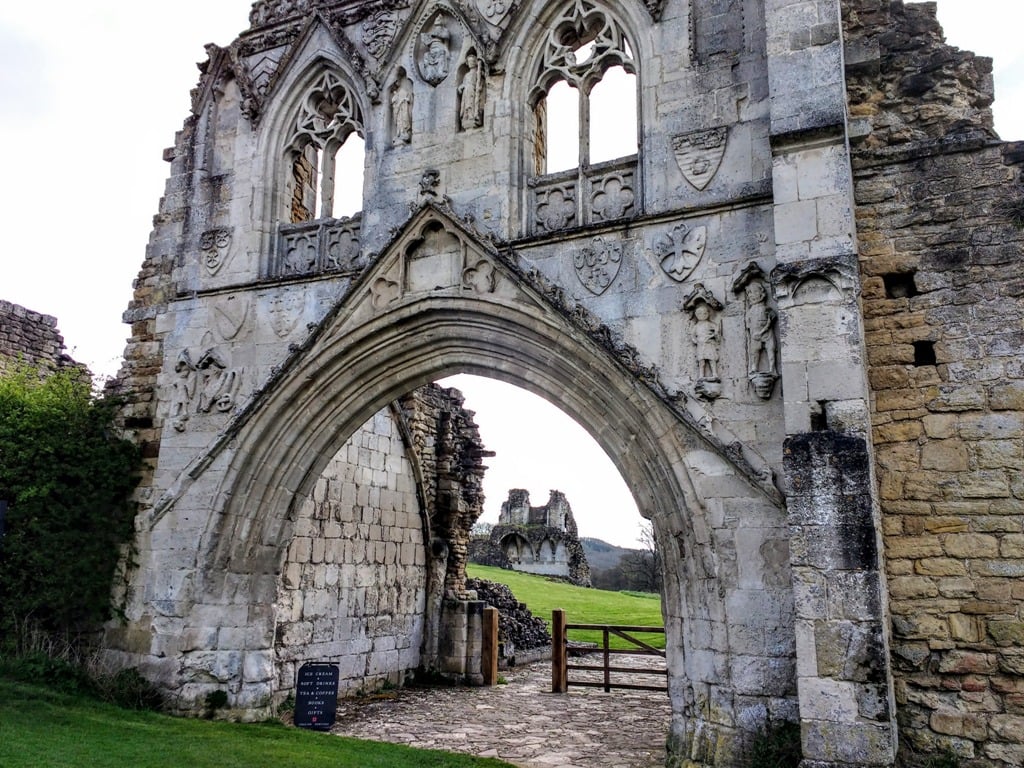
Kirkham Priory – An Augustinian community
The Augustinian priory was founded in the 1120s by Walter l’Espec, lord of nearby Helmsley, who also built Rievaulx Abbey. Legend has it that Kirkham was founded in remembrance of l’Espec’s only son who had died nearby as a consequence of his horse being startled by a boar.
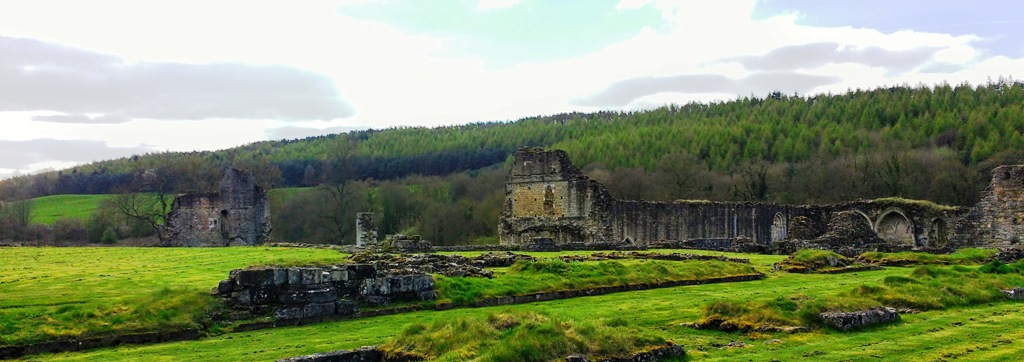
The Rule of St Augustine ruled every aspect of the monks’ lives. They wore black habits and their day was interspersed by services sung in church, managing and harvesting the Priory’s gardens. Time was set aside for reading and they ate a mainly vegetarian diet.
Because they were all ordained priests, Augustinian canons frequently had spiritual roles in wider society, serving as chaplains and parish priests.

Legend says that Kirkham was founded in remembrance of l’Espec’s only son who had died close to the site due to his horse being startled by a boar.
In 1132, Espec founded the Cistercian Rievaulx Abbey, about 20 miles from Kirkham and close to his castle at Helmsley. The arrival of the Cistercians galvanized the existing Augustinian monastery and demanded reforms based on Cistercian rules. Between 1135 and 1140 there was an attempt to transform the priory into a Cistercian monastery as a daughter house of Rievaulx.
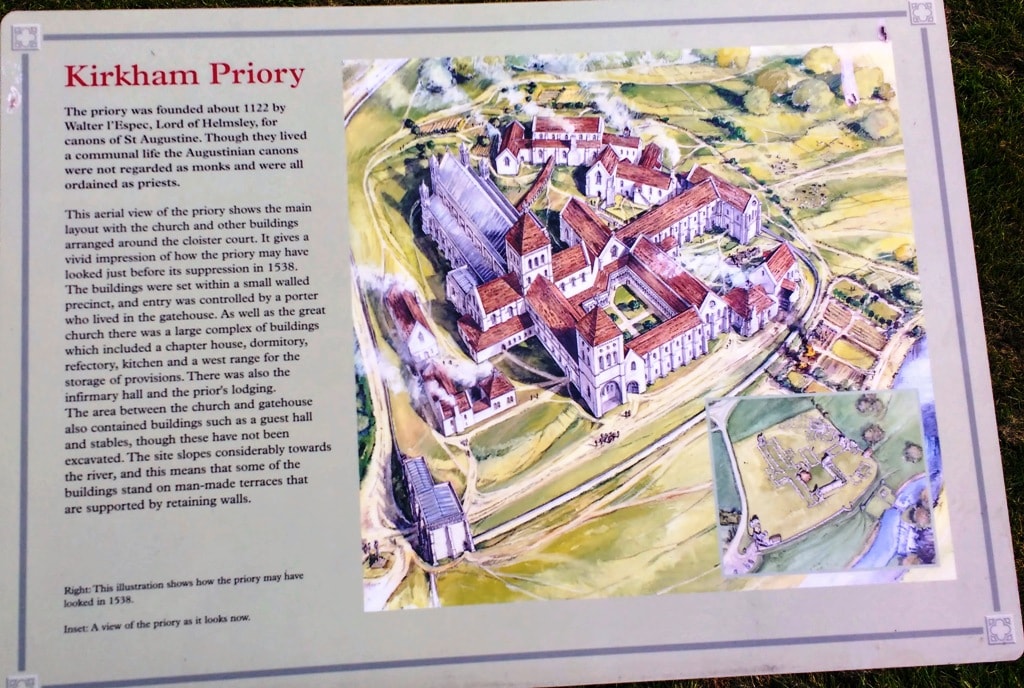
The plan did not gain approval in the Kirkham Abbey community. An agreement survives showing that the canons who did not wish to join the Cistercians were to be provided with their own monastery at Linton-on-Ouse, about 20 miles away. They were allowed to take from Kirkham its crosses, chalices, books and vestments, and also the priory’s coloured glass, which was forbidden by the Cistercians. However, the changes never came about and Kirkham remained an Augustinian monastery.

In the 14th century, the wars between Scotland and England affected many of the priories and monasteries of England in the North. In 1322 Scottish armies sacked both nearby Rievaulx and Byland. Kirkham’s estates in Northumbria were devastated and the priory lost its income from its parish churches in the county and was deep in debt.
The most extensive remains are those of the 12th and 13th-century priory church, which forms the north cloister range. Further remains include the 13th-century chapter house, dorter, guest house, kitchens and the lavatorium.
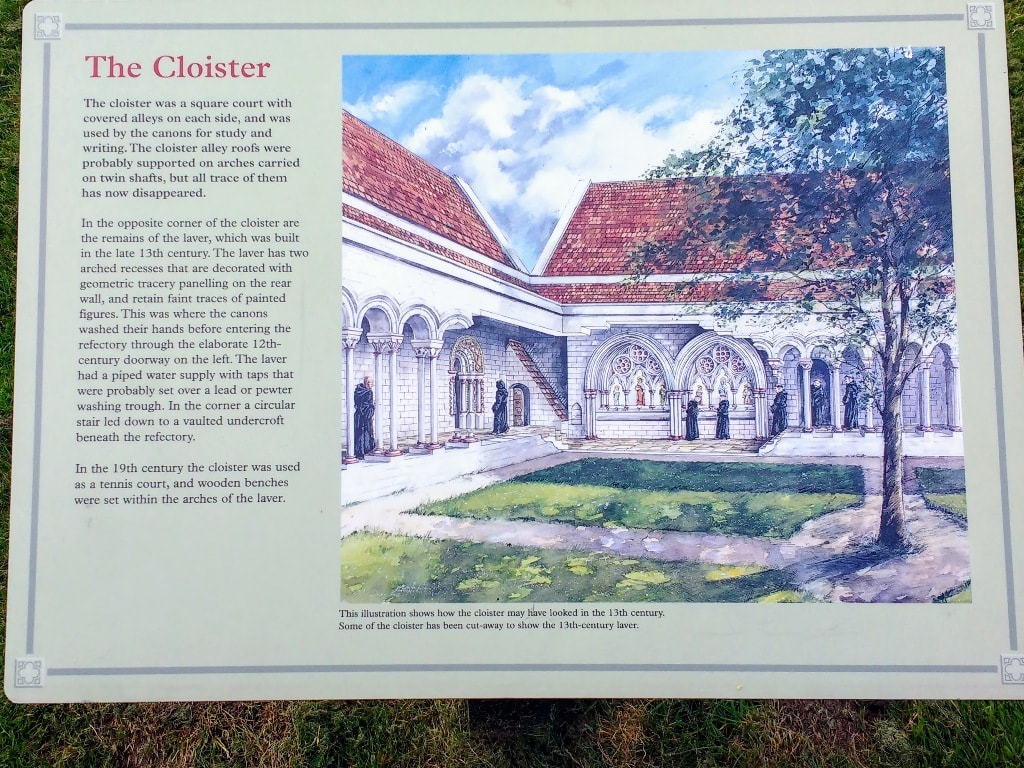
Originally the nave of Kirkham’s church was used as a parish church for the community. There was a screen in place that separated the people and the monks that had two doors that could be locked.
The parish church had its own bell tower and there was a baptismal font and weddings and celebrations took place here. The nave also contained a free school for the local children.

The refectory is on the south side of the cloister. It was rebuilt in the 13th century but is thought to have reused the doorway of the late 12th-century phase.
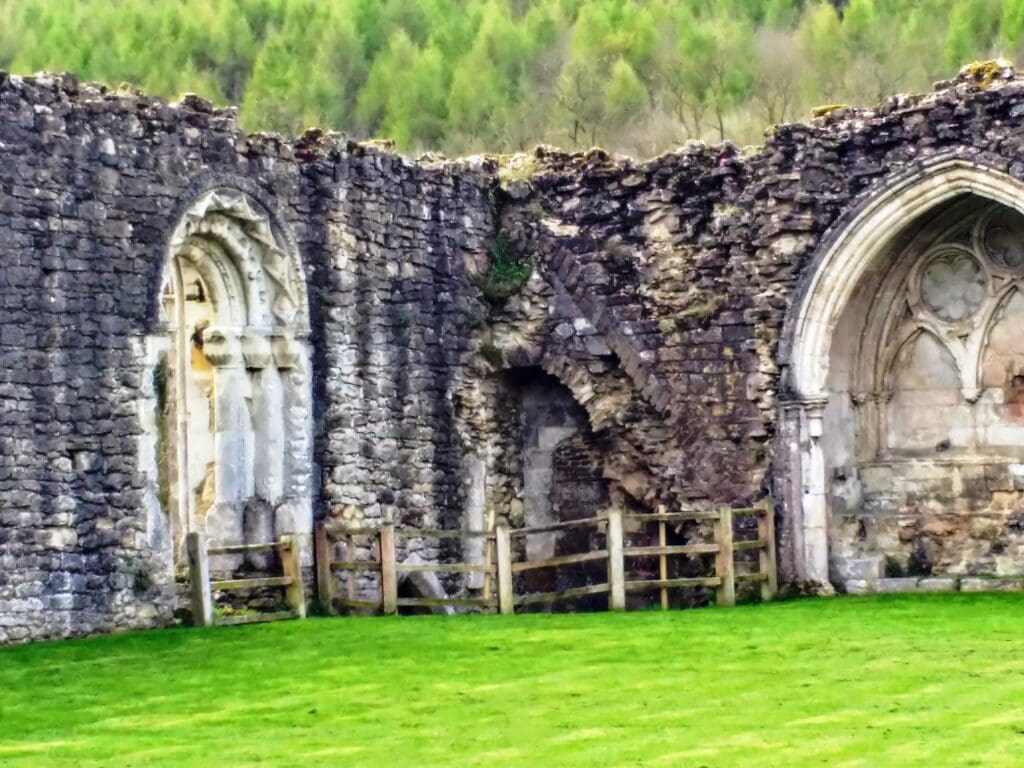
By the middle of the 15th century, a chapel was built for the people near the priory’s gate. The Abbey claimed that it was to ensure the monks and canons were not disturbed but in reality, the plague was raging and the Abbey wanted to ensure its members were safe from the contagion – not that it helped in the end.

From 1155, following the death of l’Espec, the abbey passed to the de Roos family, of Helmsley. It was surrendered to the crown in 1538 during the Dissolution of the Monasteries and stripped of its valuables.
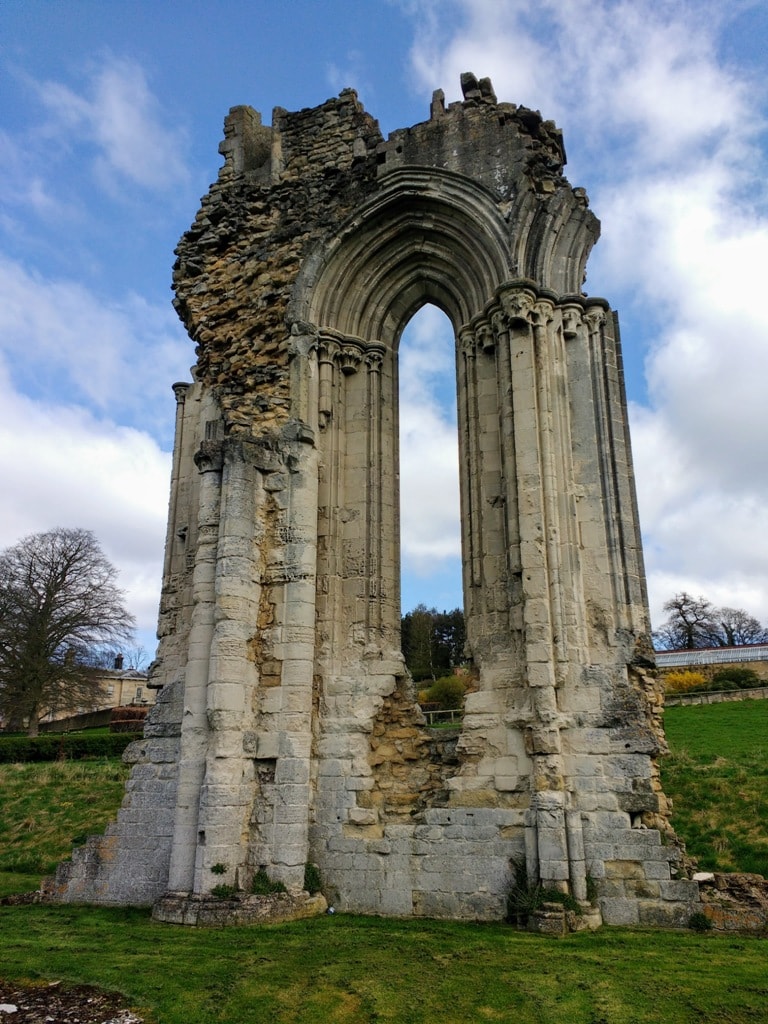
We came across Kirkham Priory when we were exploring North Yorkshire and we passed an incredible gatehouse that was obviously medieval gothic in its architecture. Kirkham Priory is located on a slope above the River Derwent and from the Priory ruins you can see the river and its lovely arched bridge. Surrounded by beautiful green wooded slopes the monks had to create terraces for many of the buildings.
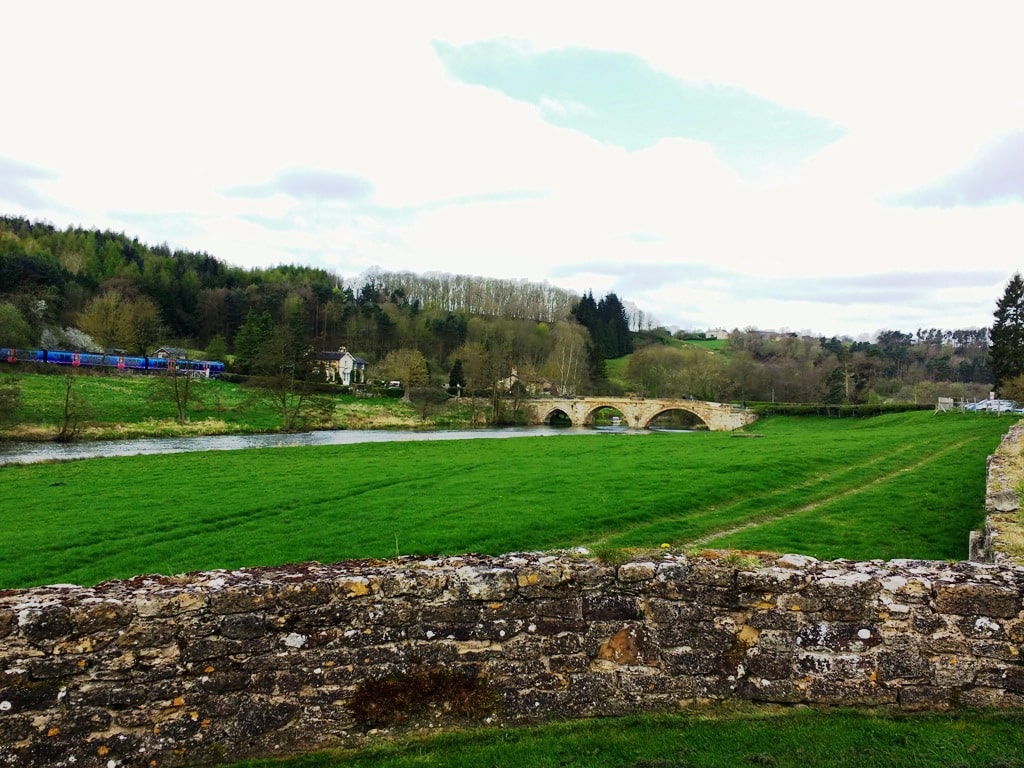
The Gatehouse of Kirkham Priory was built c. 1290–95 and is a rare example of Gothic architecture. It has a wide arch of continuous mouldings with an ornamented gable running up to the windows, with sculptures of St George and the Dragon on the left, and David and Goliath to the right. Above the arch is Christ in a pointed oval recess, plus two figures below of St Bartholomew and St Philip, in niches. There are also many escutcheons with the armorials of the various benefactors of the Priory, including the arms of de Ros, and l’Espec the previous owners.
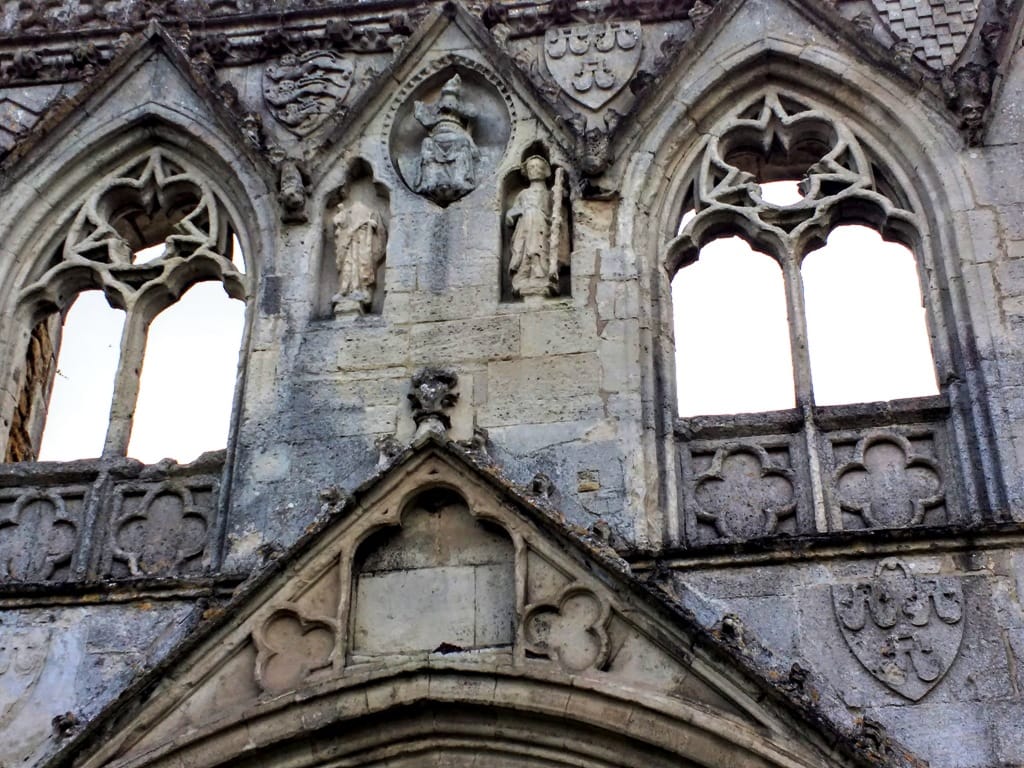
During the Second World War, the priory grounds were used by the military in training for the D-Day landings which took place on 6 June 1944 in Normandy. One of the unit’s training at Kirkham was the British 11th Armoured Division. They used Kirkham and its ground to manoeuvre and test tanks, jeeps and other landing vehicles as well as testing waterproof compounds on the equipment to be used in the landing. The troops used the high wall of the Western Cloister in training with scrambling nets.
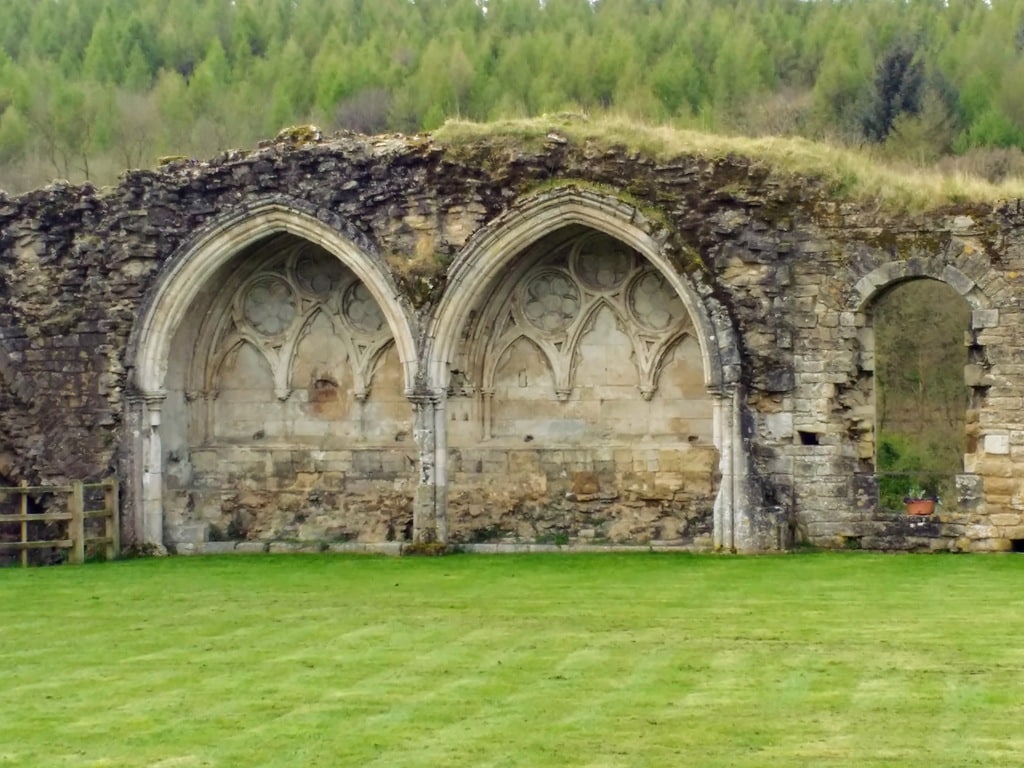
The cloister wall stands on a terrace so that the exterior of the wall is much higher than the interior face. The exterior wall has beautiful blank arcading. This wall was used for climbing exercises by British forces training for the Normandy invasion during World War II.
Prime Minister Winston Churchill and King George VI visited the priory in secret to monitor preparations, which demonstrates just how important this use of the Abbey grounds was.
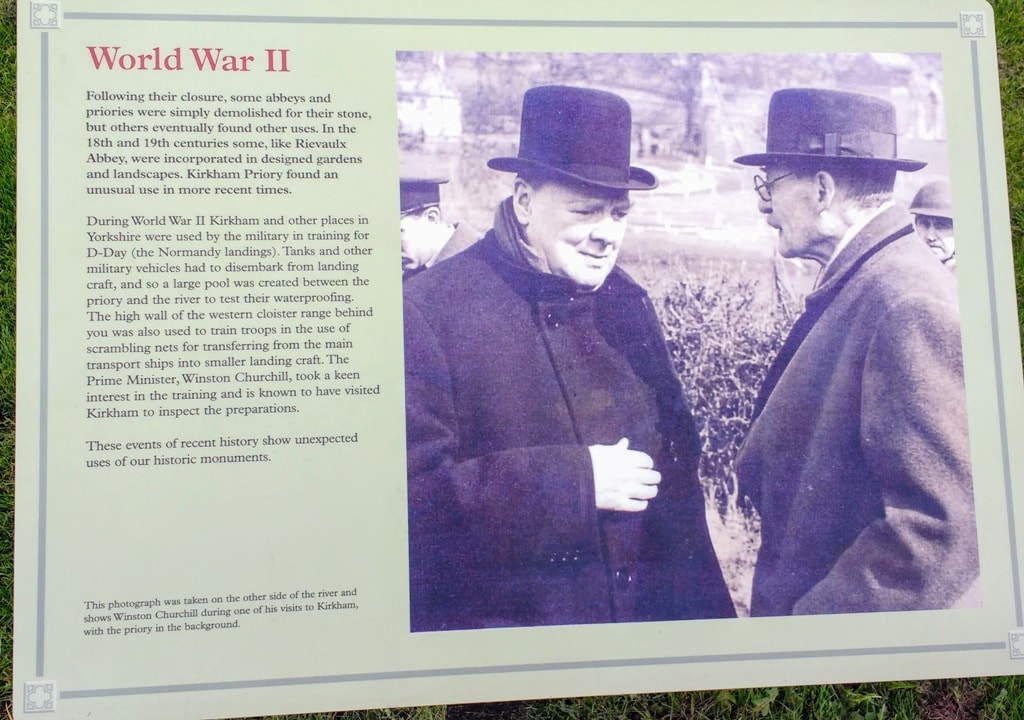
The ruins of Kirkham Abbey are now Grade I listed and a scheduled monument in the care of English Heritage.
There is a beautiful circular walk that begins at the Kirkham ruins and follows ancient woodlands through the Howardian Hills before returning along the riverbank. The Abbey’s grounds are dog friendly and this makes a wonderful picturesque walk.
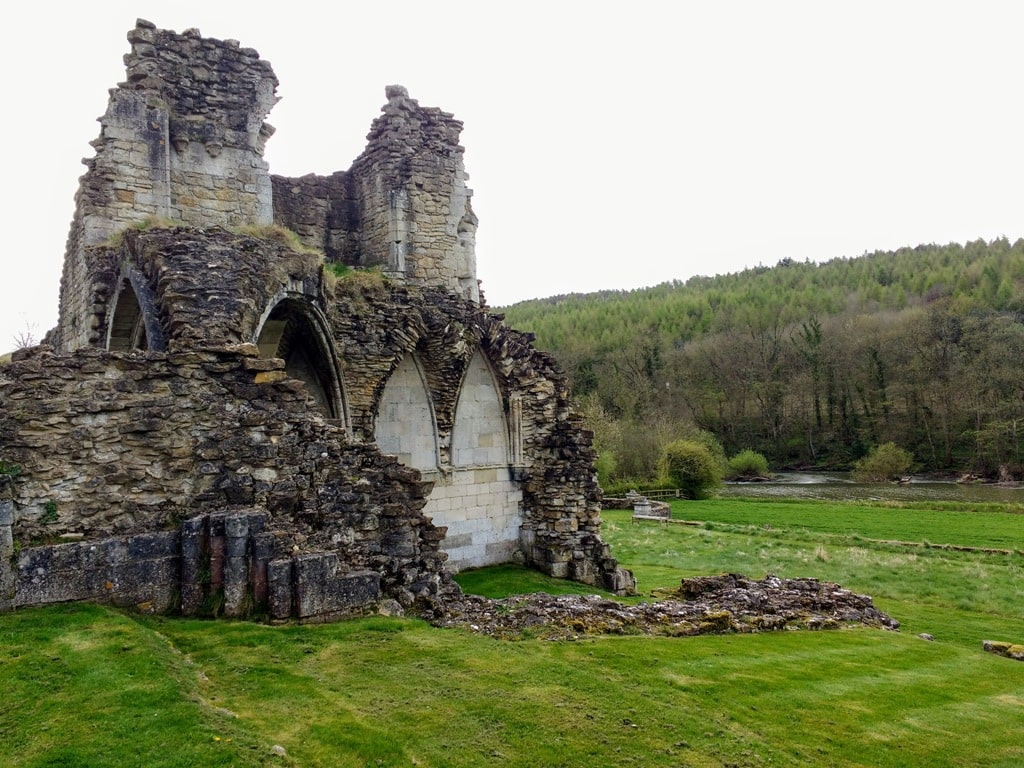
Where to find Kirkham Priory
The priory is located around 5 miles to the southwest of Malton, on a minor road off A64. Free parking is available for about 50 vehicles on a gravel surface some 100 metres from the site. Entry fees to Kirkham Priory are £3.00 per adult.
Have you found any hidden gems in England like Kirkham Priory? I’d love to hear about them.
You might also like to read
20 Magnificient Cathedrals in England to see
Waterfalls in the Yorkshire Dales
Witch Trials in England: 33 Witch Sites to Visit
The North Yorkshire Coast – 9 perfect seaside places to visit
16 Evocative Ruined Abbeys in Yorkshire
Yorkshire Market Towns & Prettiest Yorkshire Villages
All the best things to do in Pickering North Yorks
The Shambles York the oldest medieval street in the world
Pin it for later

